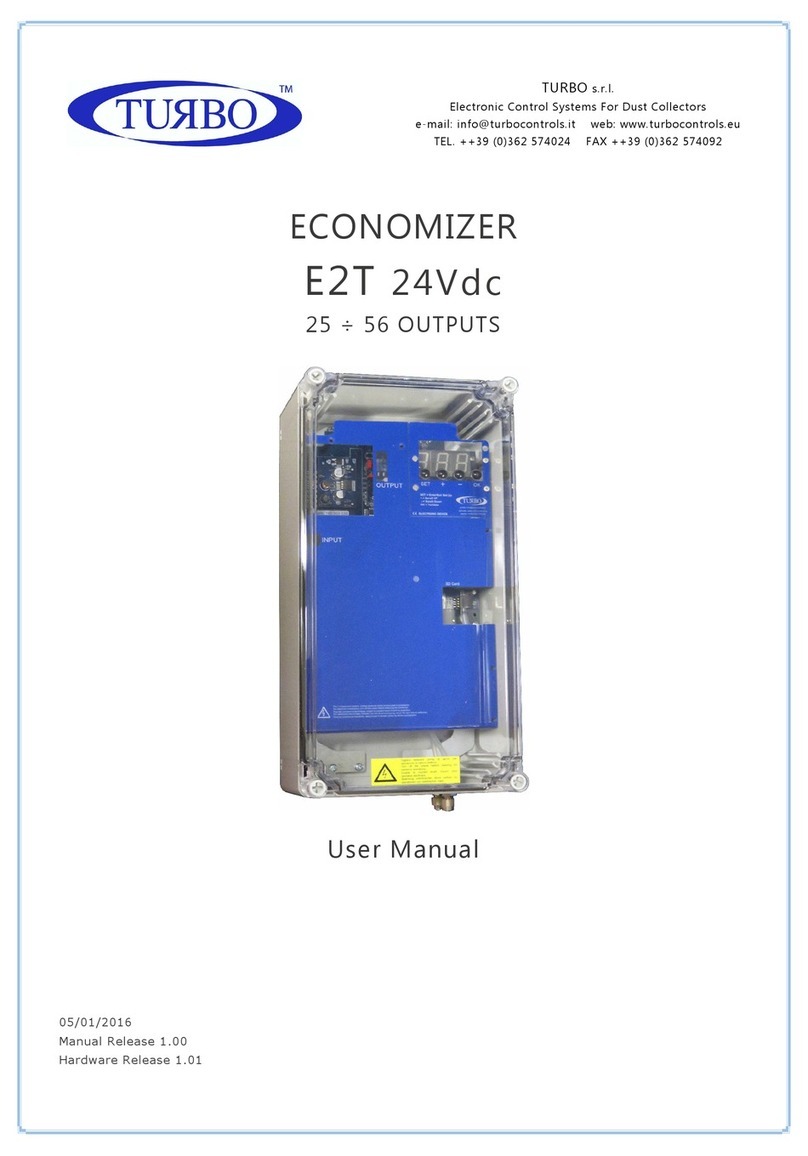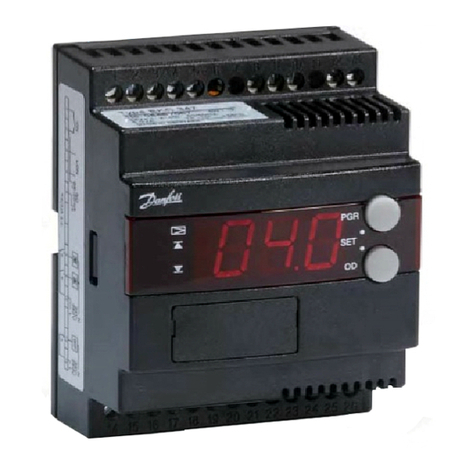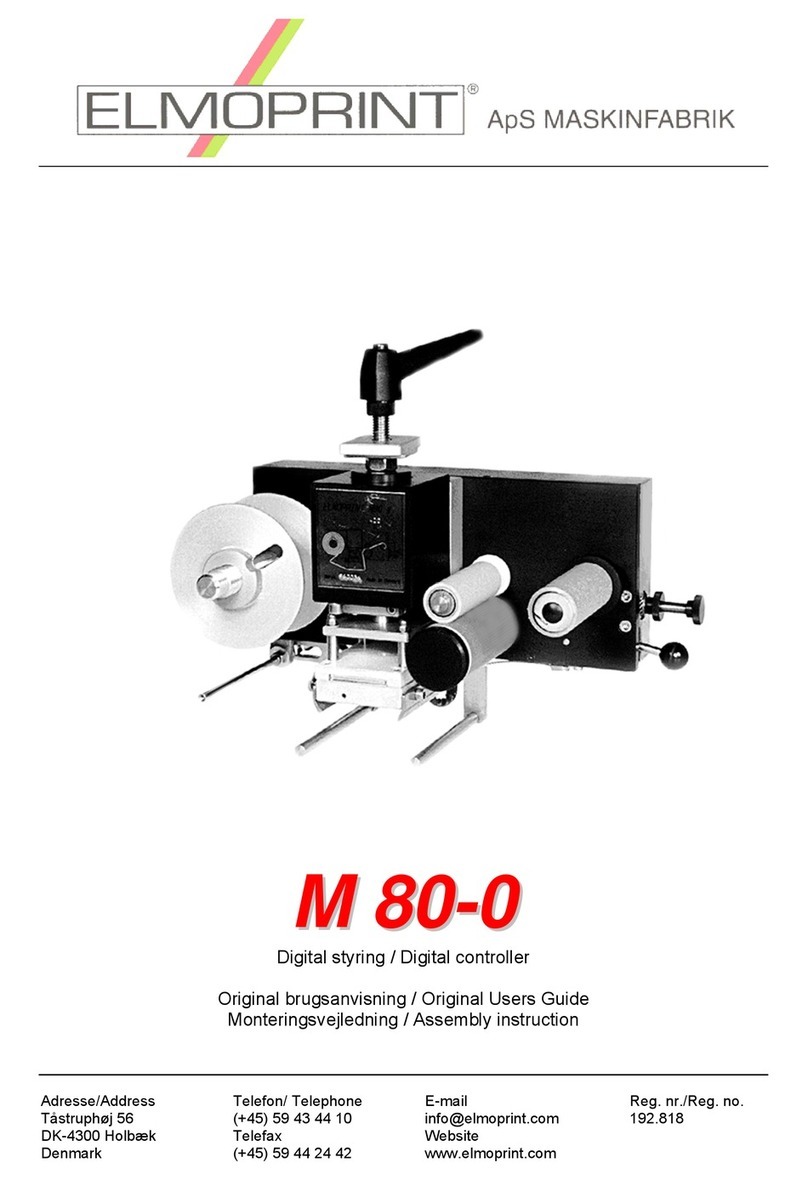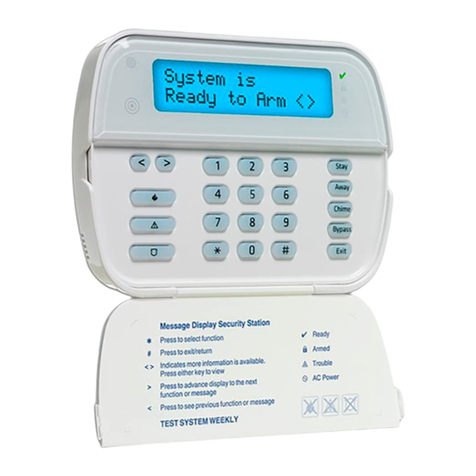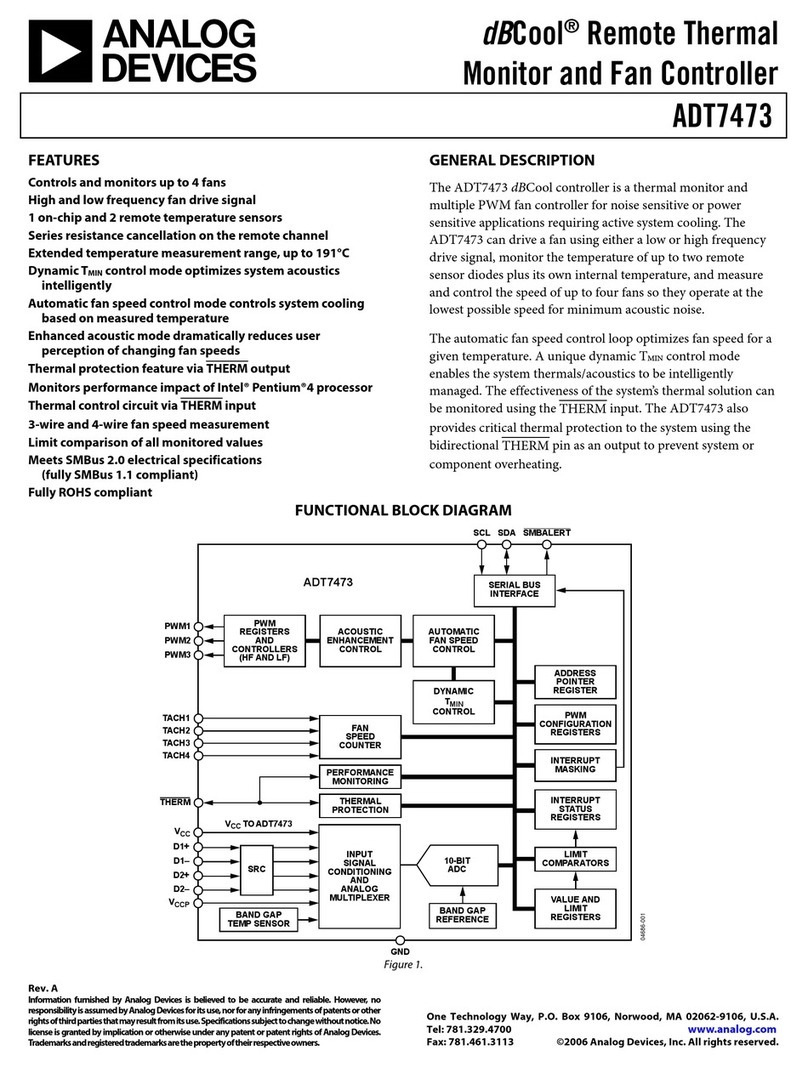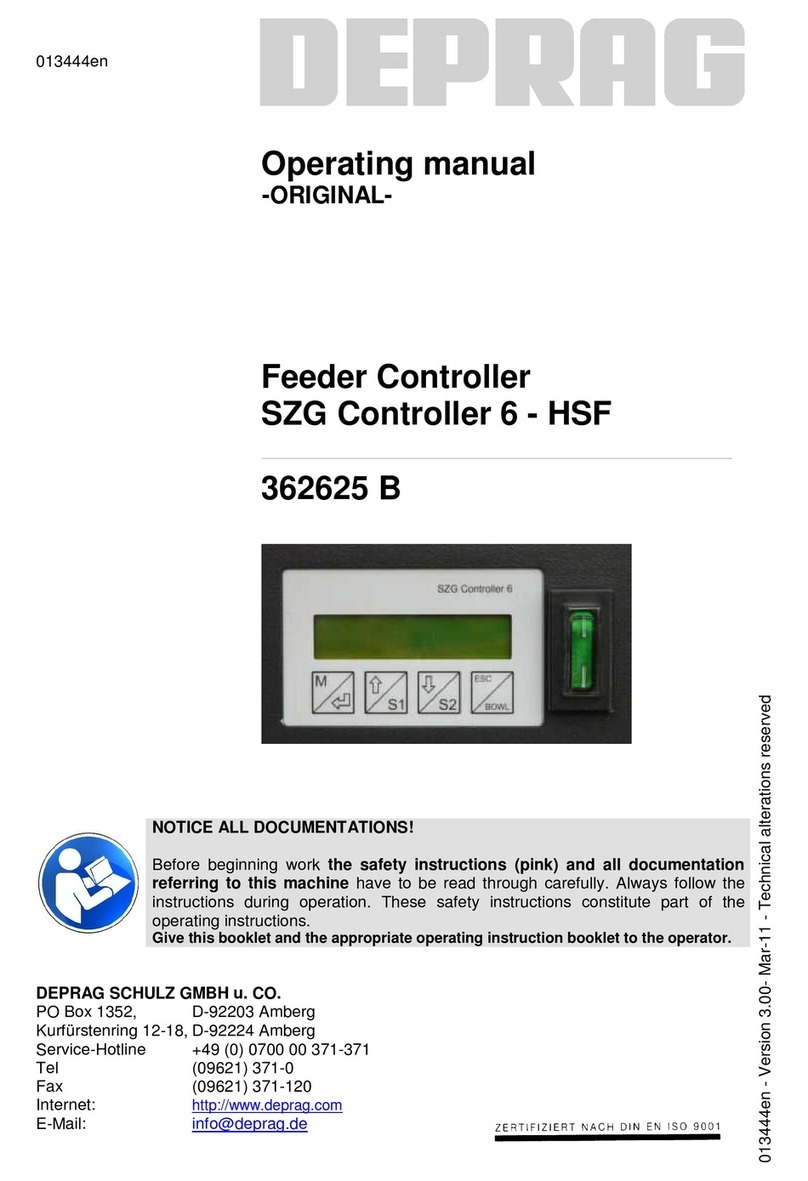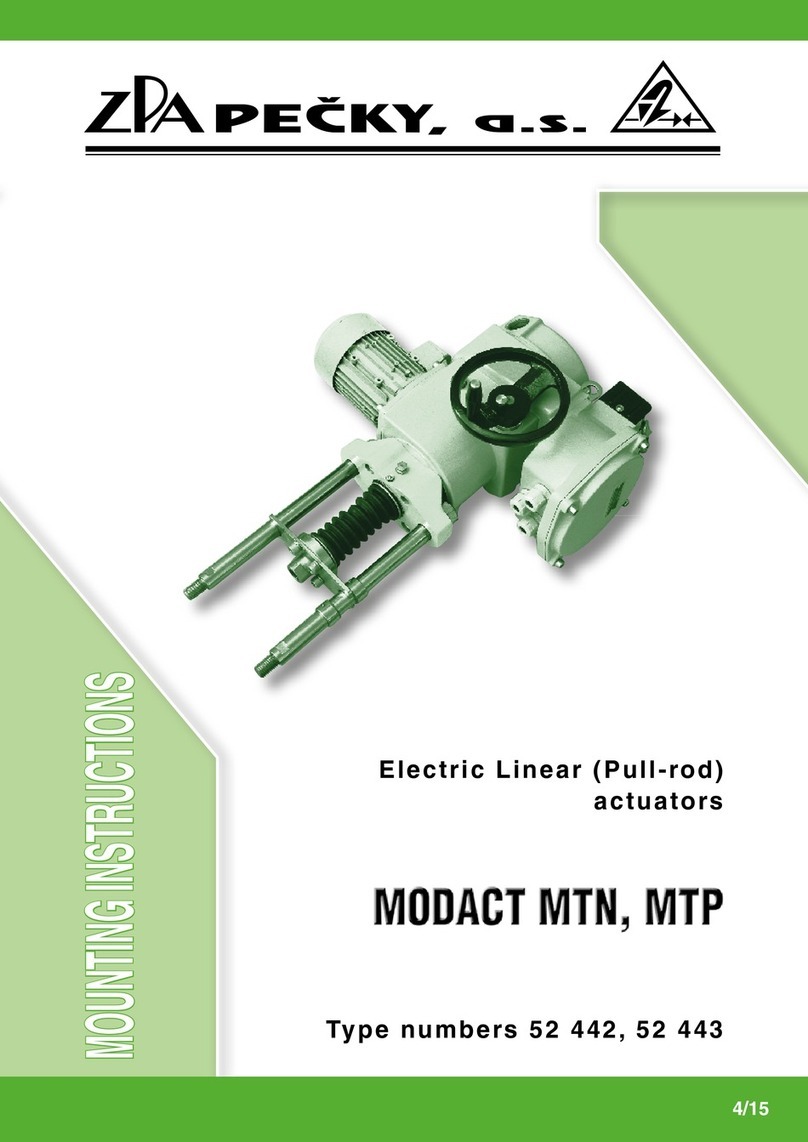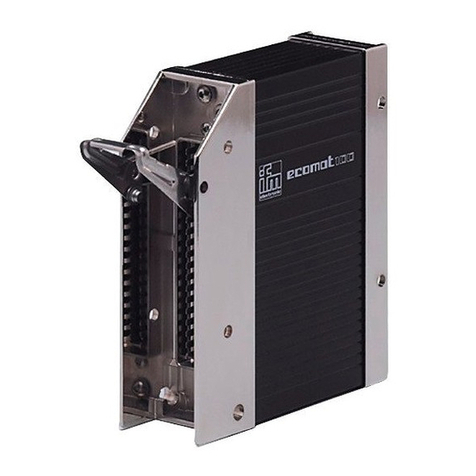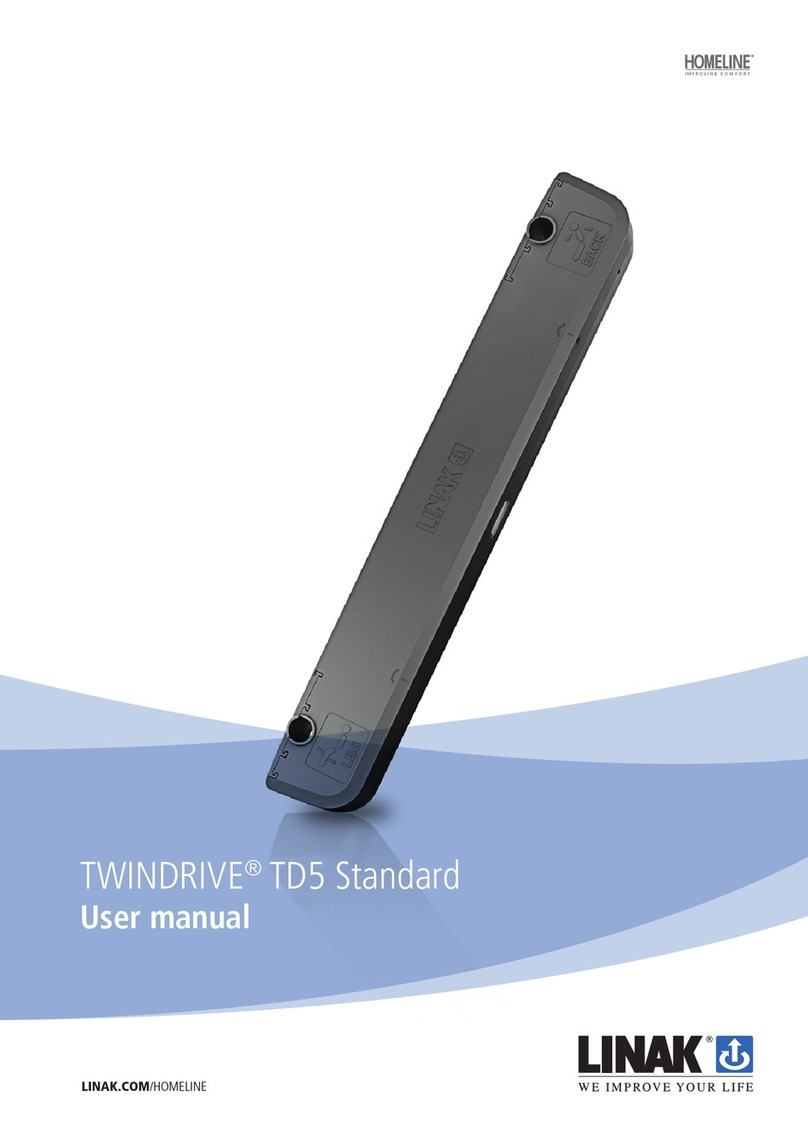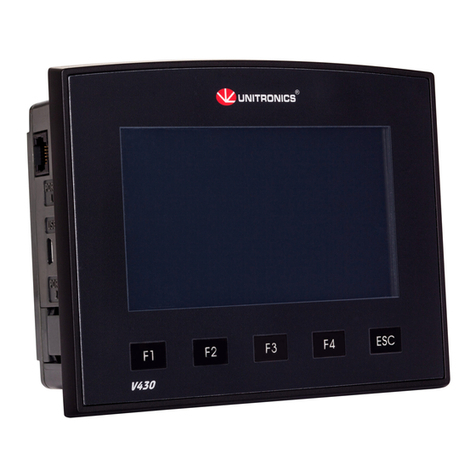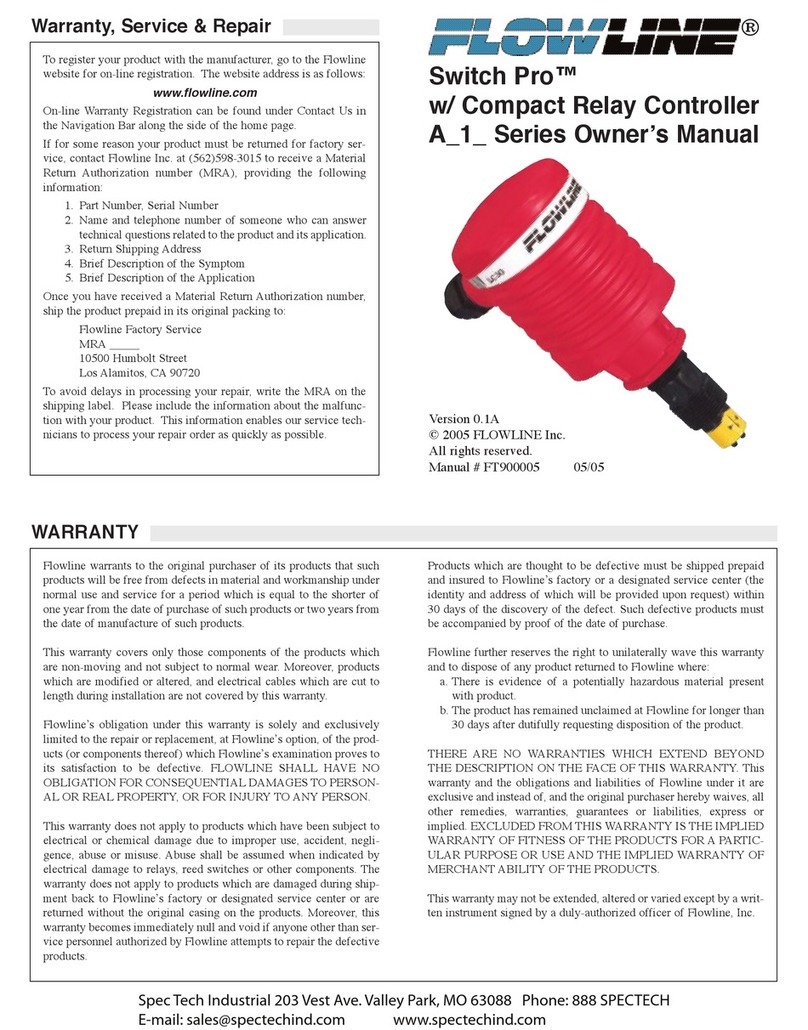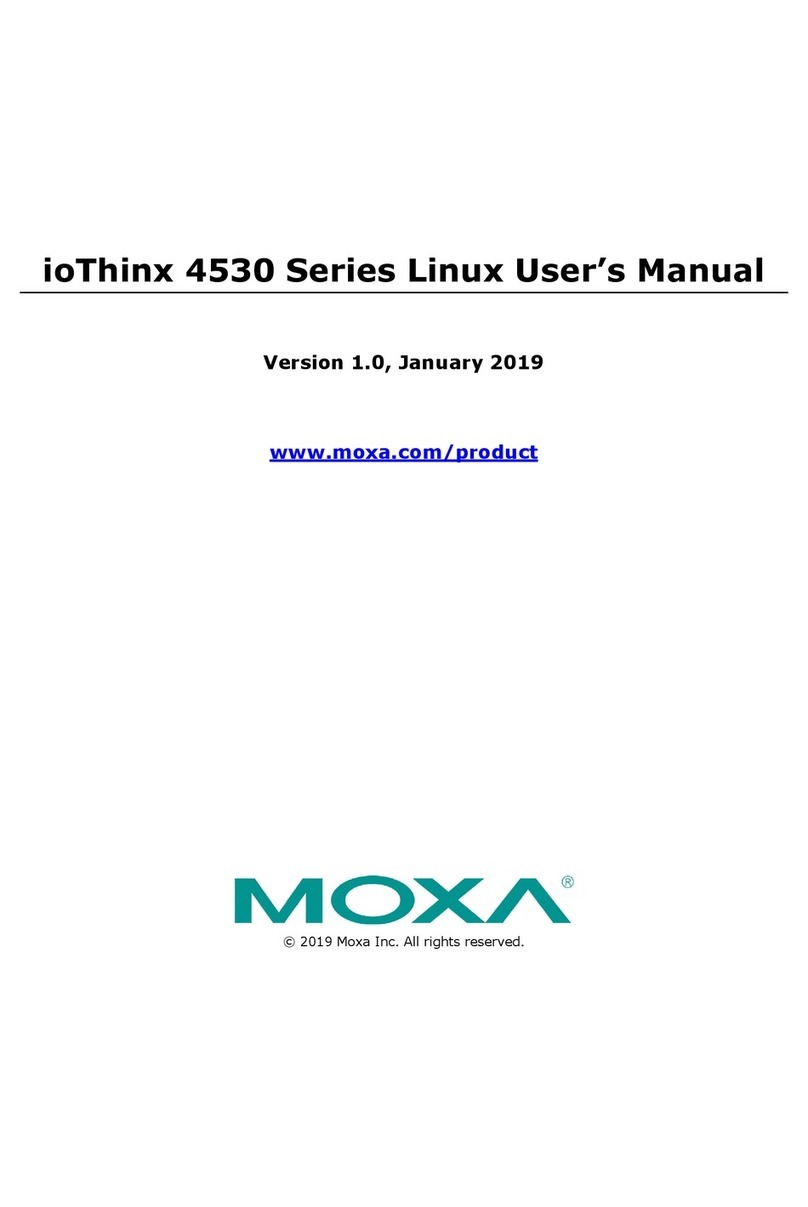GL Sciences PHASER User manual

PHASER Olfactory GC Port
User’s Guide
www.glsciences.eu

PHASER User’s Guide
Issue 2.0
Disclaimer & Copyright
Page i
Disclaimer
GL Sciences B.V. makes no representations or warranties with respect to the contents or use of this
manual and specifically disclaims any express or implied warranties of merchantability or fitness for
any particular purpose. Further GL Sciences B.V. reserves the right to revise this manual and to make
changes to its content at any time, without obligation to notify any person or entity of such revisions
or changes. The instruments are similarly subject to change without notice.
Copyright
No part of this manual may be reproduced or transmitted in any form or by any means, electronic or
mechanical, including photocopying and recording, for any purpose other than the purchaser's
personal use without the written consent of the copyright holder.
GL Sciences B.V., 2010-2017. All rights reserved.
GL Sciences B.V.
De Sleutel 9
5652 AS Eindhoven
The Netherlands
Telephone: +31 (0)40 254 95 31
E-mail: [email protected]
Web site: www.glsciences.eu
Trademarks
SilFlow is a trademark of SGE Analytical Science.
Sulfinert®is a registered trademark of Restek Corporation.
Vespel®is a registered trademark of DuPont.
PEEK™is a trademark of Victrex plc.
Windows, Windows Vista, and Windows 7 are either registered trademarks or trademarks of
Microsoft Corporation in the United States and/or other countries.
Adobe, Adobe Reader are either registered trademarks or trademarks of Adobe Systems
Incorporated in the United States and/or other countries.
Other company and product names appearing herein are trademarks or registered trademarks of
those companies respectively.

PHASER User’s Guide
Issue 2.0
Revision History
Page ii
Revision History
Document Number: G800002
Date
Issue
Description
17-02-2012
1.0
Initial issue
18-10-2012
1.1
Chapters 7.3 –7.7 revised
07-02-2014
1.2
CE Declaration of Conformity and company name changed
09-01-2015
1.3
Company name change and some installation part added extra
information
14-02-2017
2.0
Chapters 2, 6, 7, 11 and 12 are revised

PHASER User’s Guide
Issue 2.0
Declaration of Conformity
Page iii

PHASER User’s Guide
Issue 2.0
Contents
Page iv
Warranty Information
GL Sciences provides the following warranty for this instrument.
1. Period:
One year from the date of shipment or six months after repair.
2. Terms:
GL Sciences will provide free replacement parts for, or repair free of charge, any instrument that fails
during the warranty period. The warranty covers manufacturing defects only.
3. Exclusions:
GL Sciences does not guarantee that the operation of this product will be uninterrupted or error-
free. GL Sciences is not responsible for damage that occurs as a result of your failure to follow the
instructions intended for this instrument. The warranty does not apply to consumable parts and
does not extend to any product, which was damaged or lost as a result of:
1) accident, misuse, contamination, improper or inadequate maintenance or other external
causes;
2) operation outside the usage parameters stated in the user documentation that shipped with
the product;
3) improper site preparation or maintenance;
4) loss or damage in transit;
5) modification or service by anyone other than GL Sciences or an GL Sciences authorized
representative;
4. Limitation of Liability:
The liability of GL Sciences (or its appointed representative) is limited to the cost of repair and/or
replacement of the product under warranty only. In no event, will GL Sciences be liable for any
damages caused by the product or the failure of the product or perform, including any lost profits or
savings, business interruption, loss of use or any other commercial or economic loss of any kind, or
special, incremental, or consequential damages. GL Sciences is not liable for any claim made by a
third party or made by you for the third party. This limitation of liability applies whether damages
are sought, or a claim made, under this warranty or as a tort claim (including negligence and strict
product liability), a contract claim or any other claim. This limitation in liability cannot be waivered
or amended by any person.
Replacement Part Availability
Replacement parts for this instrument will be available for period of seven (7) years after the
discontinuation of the product. Beyond this period such parts may not be available.

PHASER User’s Guide
Issue 2.0
Contents
Page v
Contents
1. Precautions and Warnings ...........................................................................................................1
1.1 General Precautions and Warnings...........................................................................1
1.2 Installation Precautions and Warnings .....................................................................1
1.3 Operation Precautions and Warnings.......................................................................2
1.4 Warnings Signs ..........................................................................................................4
2. System Overview.......................................................................................................................2.1
2.1 Hardware................................................................................................................2.1
2.2 Split Manager Software..........................................................................................2.1
2.3 PHASER Features....................................................................................................2.2
3. Unpacking ................................................................................................................................3.1
4. Hardware ................................................................................................................................4.1
4.1 PHASER Controller Front Panel ..............................................................................4.1
4.2 PHASER Controller Rear Panel ...............................................................................4.3
4.3 PHASER Transfer Line.............................................................................................4.5
5. Installation Requirements.........................................................................................................5.1
6. Pre-Installation..........................................................................................................................6.1
6.1 Installing Stabilizers................................................................................................6.1
6.2 Installing Transfer Line Side Covers .......................................................................6.3
6.3 Gas Chromatograph Compatibility.........................................................................6.4
6.4 Carrier Gas Supply and Piping ................................................................................6.5
7. Transfer Line Installation...........................................................................................................7.1
7.1 Securing GC Holder ................................................................................................7.1
7.2 Adjusting Transfer Line Position.............................................................................7.2
7.3 Using Arm Stand.....................................................................................................7.4
7.4 Using Transfer Line Clamp (optional).....................................................................7.6
7.5 Installation on Agilent 6890/7890..........................................................................7.7
7.5.1 Left Hand Side Installation .....................................................................................7.7
7.5.2 Installation on Top of GC........................................................................................7.8
7.6 Installation on Shimadzu GC-2010.........................................................................7.9
7.7 Installation on Shimadzu GC-17A.........................................................................7.10
7.7.1 Version 1 Installation: Left Side............................................................................7.11
7.7.2 Version 2 or 3 Installation: Left Side ....................................................................7.12
7.7.3 Version 2 or 3 Installation: GC Top......................................................................7.14
8. Splitter Installation....................................................................................................................8.1
9. Preparation ...............................................................................................................................9.1
9.1 Preparing Bubbling Bottle......................................................................................9.1
9.2 Adjusting Auxiliary Gas Flow..................................................................................9.2
9.3 Preparing Transfer Line..........................................................................................9.2
9.4 Setting Transfer Line Temperature ........................................................................9.3
10. Operating Temperature Control Unit .....................................................................................10.1
10.1 Multifunctional Display........................................................................................10.1
10.2 Reading Display....................................................................................................10.2
10.3 Setting Up Temperature.......................................................................................10.2
11. Split Manager Software ..........................................................................................................11.1
11.1 Functions..............................................................................................................11.1
11.2 Software Installation............................................................................................11.1

PHASER User’s Guide
Issue 2.0
Contents
Page vi
11.3 Software Screen Description................................................................................11.2
11.4 Software Operation..............................................................................................11.6
11.4.1 Split Ratio and Capillary Tube Length Calculations..............................................11.6
12. Nose Guard .............................................................................................................................12.1
13. Maintenance ...........................................................................................................................13.1
14. Troubleshooting......................................................................................................................14.1
15. Utility Specifications................................................................................................................15.1
15.1 PHASER Hardware................................................................................................15.1
15.2 Split Manager Software........................................................................................15.1
16. Technical Specifications ..........................................................................................................16.1
17. PHASER Options ......................................................................................................................17.1
18. PHASER Spare Parts.................................................................................................................18.1

PHASER User’s Guide
Issue 2.0
Precautions and Warnings
Page 1-1
1. Precautions and Warnings
This section explains the warnings and cautions that should be observed when installing or operating
PHASER.
Safety information is covered at relevant points throughout the manual. Please read this manual in
its entirety before installing or operating the instrument. Should any point remain unclear, contact
your supplier for assistance before proceeding.
NOTE:
Warnings, precautions and other items of interest are indicated by the following
conventions:
WARNING! Indicates a potentially hazardous situation, which, if not avoided,
could result in moderate to serious injury or possibly death.
CAUTION! Indicates a potentially hazardous situation, which, if not avoided,
could result in minor injury or equipment damage.
ATTENTION! Indicates that incorrect operation can result in damage to the
instrument or adversely affect performance.
NOTE! Emphasizes additional information that is provided to ensure proper
use of this instrument.
1.1 General Precautions and Warnings
Use PHASER for specified types of analyses only.
Follow the procedures as written in this manual.
Do not modify or disassemble instrument without an express approval of GL Sciences B.V.
or its authorized representative as this may compromise safety.
1.2 Installation Precautions and Warnings
PHASER is designed for installation and use in a laboratory environment by suitably trained personnel.
All relevant safety aspects should be assessed in accordance with the local regulations before installing
and commissioning the instrument.
An GL Sciences representative must perform instrument installation and configuration. To
prevent potential injuries, contact an GL Sciences representative if the instrument must be
moved after installation.

PHASER User’s Guide
Issue 2.0
Precautions and Warnings
Page 1-2
PHASER is intended for use in appropriately equipped analytical laboratories. Solvents used
for analysis are flammable and toxic. Install the instrument in a very well ventilated room.
Provisions must be made for the storage of solvents in flame-proof cabinets and personnel
must wear protective clothing and eye protection at all times.
PHASER cannot be used on the GC where hydrogen (H2) is employed as a carrier gas.
The PHASER controller must be powered from an earthed (grounded) mains outlet.
Power Requirements: AC Single Phase 220-240V, Frequency 50/60 Hz
Maximum power consumption: 230 VA
Both the PHASER controller and the host GC must be disconnected from the mains power
outlet until installation of the equipment is completed.
The PHASER controller power switch is located at the rear of the instrument. Leave enough
space behind the controller to ensure unrestricted access to the power switch.
Do not use power cords others than those supplied with the instrument as this may cause
fire or electric shock.
Ambient Conditions: Temperature range: 18 - 40C
Humidity: 40 - 70%
1.3 Operation Precautions and Warnings
Warnings:
There are potentially hazardous voltages present inside the PHASER control unit. To prevent
injuries and instrument damage, do not disassemble or modify it, or perform internal repairs.
When working with capillary column, it is important to wear the necessary protective
glasses to shield eyes from injury if the column breaks or shatters on impact.
The instrument is not explosion-proof. Do not use it in the vicinity of volatile solvents as
solvent vapor can ignite. If such a situation is unavoidable, ensure adequate ventilation in
the area during usage.
This instrument delivers GC injected compounds for direct absorption into the human body
through the nose. The use of dangerous compounds can result in serious injury. Carefully
check the safety aspects of the sample composition before using the instrument.
To prevent the risk of poisoning or death, do not use any liquid in the bubbling bottle other
than clean water. Always make sure the bubbling bottle is clean when using it. Always
clean the bubbling bottle after use.

PHASER User’s Guide
Issue 2.0
Precautions and Warnings
Page 1-3
Cautions:
Do not place the instrument near any flammable materials or potential fire source.
Do not supply air to the bubbling bottle suddenly or at a flow rate greater than 50ml/min,
as the bubbling bottle might break or the water might shoot out.
To prevent burns, do not arrange piping and other parts while the gas chromatograph oven
is hot. Wait until the oven temperature is below 50C.
To prevent burns, do not touch or adjust the PHASER transfer line while it is hot. Wait until
the line temperature is below 50C.
To prevent nose burns, do not use the instrument with the nose cone detached. In some
situations, the attached Y-type cone can also not guaranty completely safe operation
without burns. Use R-type nose cone to prevent burns.
To prevent injury, do not force the nose cone when attaching or detaching it. The cone may
breaks or shatter on impact.
The smallest radius to which the PHASER transfer line can be bent is 100 mm. Do not
excessively bend or twist the transfer line as this can cause the heater line to break and
result in electrical leakage.
Attention!
Do not store or use the instrument in an area that is hot, damp, dusty or subject to strong
vibrations.
Do not store or use the instrument in direct sunlight.
Install the instrument on a stable flat surface.
Do not use the instrument in an area where corrosive solvents or corrosive gases are
present.
Do not install the instrument near devices such as high powered circuit breakers or high
frequency furnaces that can cause power surges. Do not install the instrument near highly
magnetic devices.
Do not dismantle or modify any part of the instrument unless instructed in this manual.
Do not adjust the internal parameters of the temperature control unit.
If a problem arises with the instrument, stop usage immediately, and disconnect the power
cable from the power outlet.
Do not use the PHASER transfer line for any purpose other than those described in this
manual.

PHASER User’s Guide
Issue 2.0
Precautions and Warnings
Page 1-4
1.4 Warnings Signs
Warning labels are shown in various places on the product to ensure safety during installation and
operation of the instrument. Please pay close attention to the signs during installation and use.
To reduce the risk of damage, fire or explosion, do not use flammables,
explosives or corrosive gas near the instrument.
①
To prevent electric shock, be sure to unplug the power cable from the
power outlet before replacing the fuse.
To reduce the risk of damage, fire or excessive heat, connect the power
cable to a properly rated and grounded power outlet.
Be sure to use a fuse with the same rating when replacing it.
②
①
③
②
⑤
④
⑥
PHASER Controller
Cover
Warning
Warning
Warning
Caution

PHASER User’s Guide
Issue 2.0
Precautions and Warnings
Page 1-5
To prevent damage to the instrument from electrical leakage, connect the
supplied GND cable to the GND terminal on the PHASER transfer line.
⑤
To prevent electric shock, be sure to unplug the power cable from the
power outlet before replacing the fuse.
Make sure to use a fuse with the recommended rating when replacing it.
③
To reduce the risk of electric shock or electrical leakage, do not connect a
heater other than that designed for use with the PHASER transfer line.
To prevent electric shock, always plug and unplug connectors after
disconnecting the power cable from the power outlet. Also, do not switch
the power on while connectors remain disconnected.
④
Warning
Warning
Caution
Caution
To prevent burns, never touch metallic parts and the areas surrounding
them while the heater is on. Also while the heater is on, do not attempt to
adjust the position of the PHASER transfer line or the nose cone.
Caution
Warning
⑥

PHASER User’s Guide
Issue 2.0
System Overview
Page 2-1
2. System Overview
2.1 Hardware
The PHASER splits a line from the capillary column inside the gas chromatograph oven and brings it
outside allowing the operator to use his sense of smell (the nose) to detect/recognize the GC
separated compounds. This technique is known as GC Olfactometry.
The PHASER olfactory port is compatible with a wide range of gas chromatographs. Since the transfer
line does not have cold spots, compounds with a high boiling point are less likely to leave residual
odors around the outlet, removing the chance that subtle changes in scent may be missed.
The PHASER consists of a bench-top control unit, a splitter, a heated transfer line and an optional
interface box required if the voice recognition software is used (Fig. 2-1).
Fig. 2-1
2.2 Split Manager Software
Split Manager is the split ratio calculation software application. It is provided on the Software CD. The
software allows to perform calculations helping to determine a number of setup parameters like the
split ratio (flow ratio) for the gas chromatograph column and the transfer line, the time it takes for
samples to reach the line outlet (transit time) etc. An example of the software main window is shown
in Fig. 2.2.
Gas chromatograph
PHASER transfer line
Splitter
PHASER controller
Split Manager
Olfactory Voicegram
PC
Olfactory Voicegram Interface Kit

PHASER User’s Guide
Issue 2.0
System Overview
Page 2-2
Fig. 2-2 Split Manager Software main window
Conventionally, trial-and-error technique is used to measure flow at each outlet to determine the
optimum length and diameter for the capillary tubes branching from the column. Split Manager
provides a possibility to perform necessary calculations before the analysis is started allowing to avoid
the time-consuming trail-and-error approach.
2.3 PHASER Features
Can be used for analysis of sample containing high boiling point compounds
PHASER transfer line can be heated up to 300 °C. This ensures that there is almost no high
boiling point compounds condensation around the transfer line outlet. As a result, little scent
loss occurs that makes detection of subtle scents easy.
Able to protect operator’s nasal mucous membrane from dryness
After long periods of sniffing, the nasal mucous membrane can become dry, causing the sense
of smell to dull. The PHASER features a bubbling bottle that creates humidified air, which is
supplied through the system to prevent nasal dryness that can be experienced after long
sniffing periods.
Compatible with wide range of gas chromatographs
The transfer line can be attached to any gas chromatograph that has an access hole greater
than 16 mm in diameter using a simple optional adapter plate.
Sniffing possible while sitting
The PHASER transfer line is highly flexible and can be set in any desired position, making it
possible to carry out sniffing while sitting.

PHASER User’s Guide
Issue 2.0
System Overview
Page 2-3
SilFlow Splitter
PHASER is supplied with the SilFlow deactivated splitter. The splitter installation and column
connections are easy and reliable.
Split Ratio calculation software provided as a standard item
Split Manager software allows simulation of the setup parameters. By simply typing in the
desired split ratio, transit time etc., software helps to determine the capillary tube size and
its length.
Nose cone scent residue reduced to minimum
When analyzing samples with high boiling compounds, the condensation and/or absorption
of such compounds may occur inside the conventional GC-O nose cone. To get rid of this
background, the operator often removes the nose cone and continues sniffing that often
results in burns to the nose. To solve this problem, the optional nose guard (Cat. No. 2702-
18506) is available for the PHASER, a nose cone featuring ventilation slits in the upper and
lower part of the cone. The nose guard serves to reduce scent residue in the nose cone to a
minimum and acts as a protector to prevent operator nose burns.
Compact design
The PHASER controller features compact design with the temperature control, flow control
and bubbling bottle holder all contained in one unit. The external dimensions W96×H300×
D230 mm enable the instrument to be set up in confined space.
Bubbling bottle cleansing possible
The bubbling bottle attached to the PHASER controller is removable. It is easy to clean and
maintain a hygienic state at all times.

PHASER User’s Guide
Issue 2.0
Hardware
Page 3-1
3. Unpacking
NOTE!
This is a high precision instrument that includes glass parts. Handlewith carewhile unpacking!
To unpack the instrument:
Open the package, and carefully remove the packingmaterial.
Check if there is no damage to the instrument or accessories.
Check if all the items are includedin the package. To check the items, see Packing List included with
the instrument.
Part number
Description
Quantity
275-1000
PHASER Controller
1
275-2000
PHASER Transfer Line, 60 cm**
1
275-2300
PHASER Transfer Line, 100 cm**
1
275-3010
GC Holder Set
1
275-3020
Nose Cone Type R
1
275-3070
BubblingBottle with Filter
1
275-3090
Arm Stand
1
275-3100
SideCoversSet
1
275-3140
PFA Tube, 3.18OD×1.58ID,2m
1
275-3160
Capillary Tube, 0.25mm ID×0.35mm OD, 5m
1
275-3161
Capillary Tube, 0.15mm ID×0.35mm OD, 5m
1
SGE123730
SilFlowSplitterKit
1
SGE123750
SilFlowCompatible Deactivated Tubing
1
2411-2061
1/16in. Stainless Steel Tubing,1m
1
2406-2289
1/16in. HeadUnion
1
G900002
CD with Software and Documents
1
GC InstallationPlate
1
MainsLead:
1
G200014
Step Up Autotransformer, 115V to 230V*
1
G200015
Power Cord NEMA6-16P/IEC*
1
**Only one transfer line is supplied.
*Supplied only to the countrieswith 115-120VACmains voltage.

PHASER User’s Guide
Issue 2.0
Hardware
Page 4-1
4. Hardware
The PHASER hardware consists of a bench-top control unit, a heated transfer line and a splitter that are
installedona host gaschromatograph.
4.1 PHASER Controller Front Panel
The control unit (Fig. 4.1) contains transfer line temperature controller, auxiliary air flow control, humidified
air flow control, power supply and bubbling bottle.
Fig.4-1
③
①
⑨
⑧
⑩
②
⑦
④
⑤
⑥
GC Olfactory Port
PHASER
GL Sciences BV

PHASER User’s Guide
Issue 2.0
Hardware
Page 4-2
①POWER
Switch to turn the PHASER controller ON/OFF. Pressing the Iside (top) turns the power ON, the ○
side turns thepowerOFF.
②HEATER
Switch to turn the PHASER transfer line heater ON/OFF. Pushthe switch up to turn the heater on.
The red LED flashes or stays on.Push the switch down to turn the heater off. The red LED goes off.
③TEMPERATURE CONTROLLER
The temperaturecontrollerforthe PHASER transferline.Displaysthe current temperature andis
usedfortemperaturesettings.
④AIR IN
Humidified air inletconnectedto the outlet pipe of the bubbling bottle where the humidifiedair is
created. Airintroducedinto AIR IN port is released through AIR OUT port on the rear panel of the
controller.
⑤AIR OUT
Clean air outlet. It should be connected to the PFA tube attached to the filter inside the bubbling
bottle.
⑥AIR FLOW
Air flowcontrolusedto adjust the clean air flow from the AIR OUT port. The flowshouldbeset to
50ml/min or lower. Rotate anticlockwiseto increase the flow.
⑦AUX GAS FLOW
FlowControlusedto adjust gas flow for the auxiliary gas introduced into the splitter. Set the flow
to 5ml/min. Rotate anticlockwise to increase flow. Since a mass flow valve is used, it takes a bit of
time forthe flow to stabilize.
⑧BUBBLING BOTTLE HOLDER
The holder for the bubbling bottle(P/N 275-3070) where the humidified air is produced.
⑨BUBBLING BOTTLE (P/N 275-3070)
The bottle withclean water that is used to produce humidified air. Take carethat the bottle is filled
with less than 15ml of clean water(about one third of the bottle).
⑩FILTER
Filter forcleanair introduced into the bubbling bottle.

PHASER User’s Guide
Issue 2.0
Hardware
Page 4-3
4.2 PHASER Controller Rear Panel
Fig.4-2
⑧
①
③
②
⑨
⑥
⑦
④
⑤
⑩

PHASER User’s Guide
Issue 2.0
Hardware
Page 4-4
①HEATER (Transfer Line)
Connector used to connect the heater cable for the PHASER transferline. Do not connect any
otherheaterthanthe one provided.
②Mains Power Inlet
Mains power entry module. Connect the controller power cable to a properly grounded mains
poweroutlet.
③EarthTerminal
Earth terminal used to ground the PHASER transfer line via the ground cable provided.
④ AUX GAS OUT
Auxiliary carriergas outlet. It should be connected to the splitter using the tube and metal ferrule
provided.
⑤ AUX GAS IN
Auxiliary carriergas inlet. The port should be connected to a gas chromatograph primarycarrier
gas supply source or gas bottle. Use a piece of 1/8 inch coopertube (not supplied ) to make the
connection.
⑥ AIR OUT
Outlet port for humidifiedair produced in the bubbling bottle. Use the PFA tube (P/N275-3140)
provided to connect to the transfer line humidifiedair inlet port.
⑦ AIR IN
Inlet port for the clean air supply used for production of the humidified air. The port should be
connected to a gas chromatograph primary air supply source or gas bottle. Use a1/8 inch copper
tube (not supplied) to make the connection.
⑧ CompliancePlate
Shows the serial number and date of production.
⑨ FuseHolder
Containsthemain power fuse (1x mainfuse, 1x spare fuse). The rating for this power fuse is
250VAC 5A,5.2×20mm.
⑩ Transfer Line FuseHolder
Contains the power fuse 250VAC 3A, 5.2×20mm.
Table of contents
